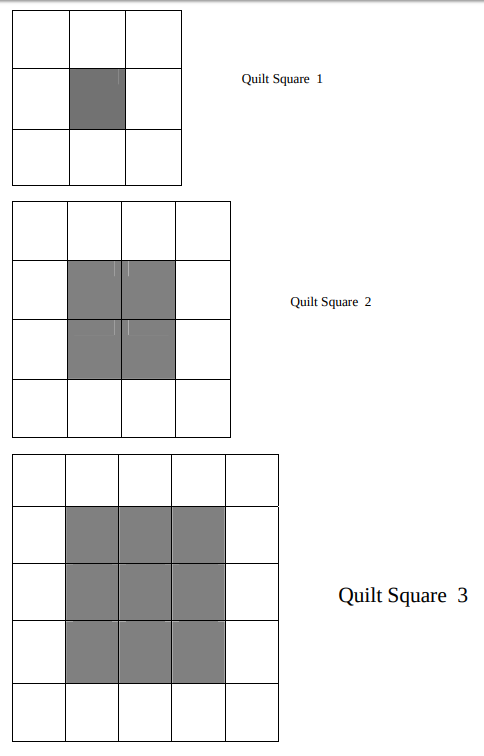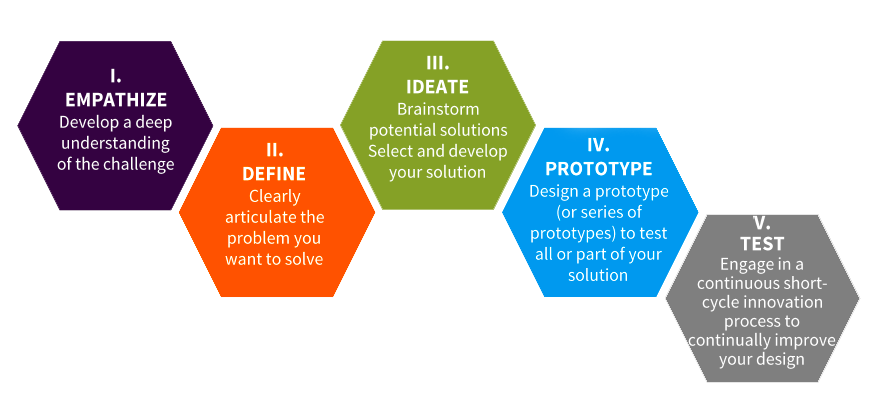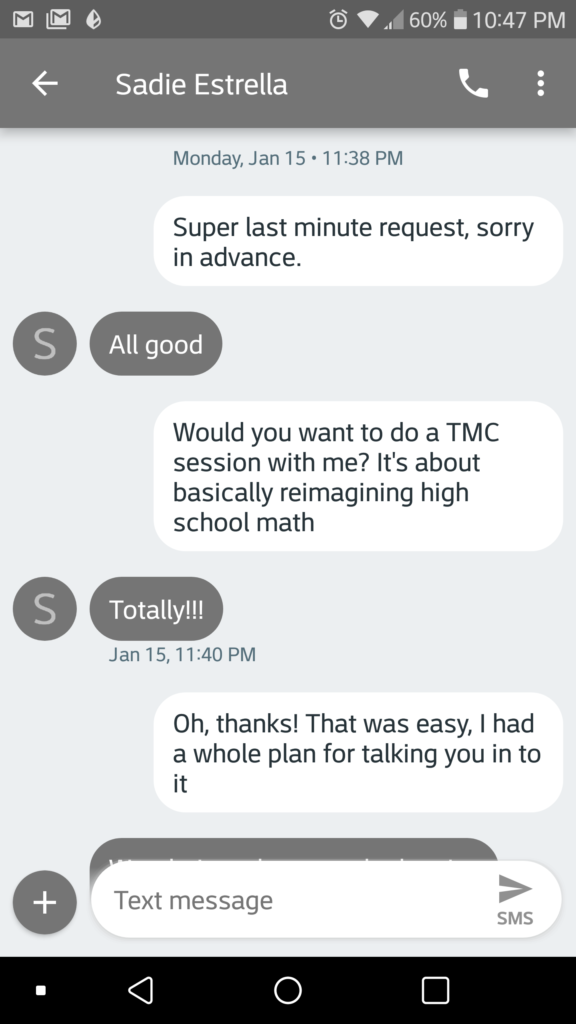- Require complex and non-algorithmic thinking.
- Require students to explore and understand the nature of mathematical concepts, processes or relationships.
- Demand self-monitoring or self-regulation of one’s own cognitive processes.
- Require students to access relevant knowledge and experiences and make appropriate use of them in working through the task.
- Require students to analyze the task and actively examine task constraints that may limit possible solution strategies and solutions.
- Require considerable cognitive effort and may involve some level of anxiety for the student due to the unpredictable nature of the solution process required.
Page 7 of 40
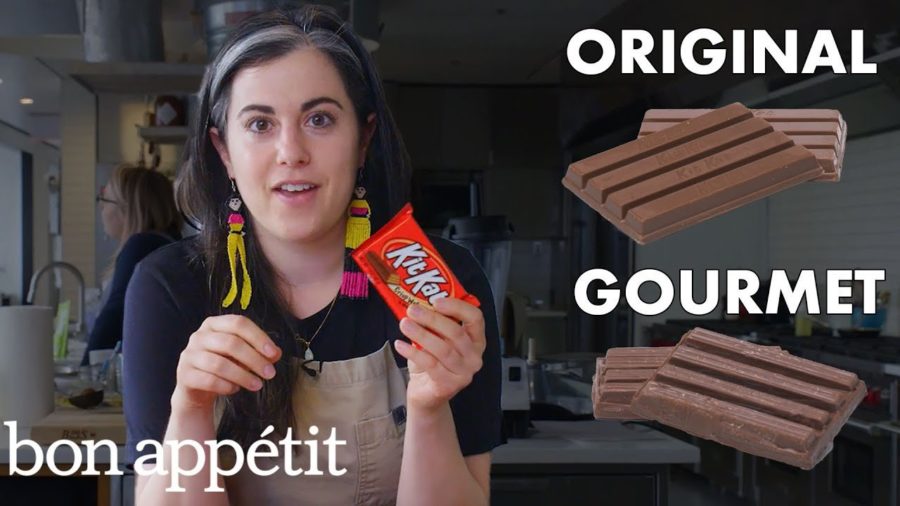
August days are good for planning the next school year, and binge watching episodes out of procrastination. I’m convinced Bon Appétit’s “Gourmet makes” show helps you accomplish both. The fast-paced ~15 min episodes are excellent for binge walking, but also are ideal models of an inquiry-based STEM design challenges. In watching ALL of the episodes while waiting for toddlers to go to sleep, I couldn’t help thinking that each is a good example of a design challenge, the challenge being how do you use regular kitchen ingredients and techniques to recreate classic junk foods like Oreos, Gushers, and Kit Kats.
The show follows the pastry chef Claire as she goes through an arc that look like a STEAM Inquiry. Specifically, it seems to line up with Stanford Design School’s 5 basic modes of design thinking Empathize – Define – Ideate – Prototype – Test. The first step empathize happens as they ask other people who work in the test Kitchen about the product they are duplicating. Claire asks “what kind of things do I need to do to make a copy of this?” and “What kind of things should I do to improve on this?” It’s almost like a notice wonder about the challenge, but in partners. This helps clarify what the finished product looks like, and establishes that chef can go to the other person later in the show to see if their final product meets that expectation. Maybe a process like this could be used in class to help kids determine their own rubric for the challenge. It also tranforms the people giving feedback into helpful judges as they give feedback as progress along the way.
Next Claire moves to other ways of gathering information.She reads the ingredients, she looks at stuff on amazon, she reads other recipes, and she watches commercials. She does all of this to come up with an approach that she can take to the challenge. This helps her get to the Define and Ideate steps, and then you see her describe what her first prototype will look like. What is nice about this is that the research is well-defined and has a fixed end point and is kept separate from being on-going and paralyzing, and the actual prototyping has to get done away from the internet while she is actually cooking stuff. What is also good is that she is making decisions and keeping track along the way, not necessarily following a recipe, which might be a good thing for students to do when they are solving a problem.
Then the show follows her as she struggles to make the different parts of that episodes dessert. After a quick montage she has something that she can eat, a Prototype she can Test. As she eats it, she can test how good it works. Since she is in a room with a bunch of people!
This made me think about a classroom full of kids, and how the kids use each other as sources of feedback while they are trying out the different prototypes they are developing to finish their design challenge. Because the students would have already given feedback in the Empathize phase. Maybe there could even be some graphic organizers that are created to ensure that these kinds of exchanges happen. On the show the exchanges often are the moments where the Claire both finds out that she isn’t there yet, and also finds out what direction to go in next. Creating these kinds of exchanges are the ones that I’m the most excited about trying in the fall.
Finally at the end, when they have satisfied the goals at the beginning of the challenge Claire declares victory. The show ends with her reading the recipe, and thus presenting the result of their work in a way that someone else can use it. I think a lot of times with projects kids get the project finished, but don’t think through how they can present it.
The show isn’t perfect (i.e. glaring lack of diversity), but it seems like good inspiration for the summer planning, or late summer binge watching. What are good projects that you could use this process?

I was super lucky to do the Reimagining High School Math morning session with Sadie Estrella. This session first came to be with a conversation on the eve of the TMC deadline.
We spent the next 20 minutes polishing up a draft proposal. A few weeks later we found out we were accepted and we started planning.
As we started to plan we had one overarching goal: to have people leave prepared to DO something. Reaching that goal meant a few things would have to happen. Participants would have to talk honestly about their schools or districts and what needed to be reimagined there. Everyone’s school is different, and we’d find it impossible to predict what changes were needed in each school. Schools are also full of people, and any change is going to involve getting people on board. This meant that we wanted people to practice the experience of pitching their idea at TMC before they go home while thinking about all of their social dynamics.
We started planning early to get an idea of how to make this unstructured session happen. In trying to build a session around ideas that we don’t know, it’s kind of like trying to plan a meal for Chopped without knowing what the secret ingredient will be. We did a couple of twitter chats ahead of time, just so we could harvest some ideas from people in the #MTBoS. The more we talked with other people, however, the more it became clear that we couldn’t really gather enough information to pretend to be the experts about any of the possible ideas. My list of potential ideas went from 5 to 15 to 50+. It was clear that we couldn’t expect to narrow the focus to a central idea like de-tracking, for example. Instead we focused on giving people lots of time to think about their situation and their idea, and how they can go about making change there while we’d do our best to help them feel supported.
On the first day we did an affinity mapping activity with post-it notes. Our group used as many post-its as they could to answer the question above, and then we moved them all around into groups afterwards. We took pictures of these and put them on this google doc:
We called it a twitter storm because we wanted twitter to help us brainstorm resources. If you look in there you will see each of the clusters and then some relevant resources below it.
On day 2 people thought about their school and the ideas that would make the most difference there. The next day everyone wrote out descriptions of their idea and took turns giving each other feedback. Ideas were as a varied as we’d expected. Everyone had a different idea for their school which reflected their different backgrounds (private, public, urban, rural, etc). A thread emerged connecting the ideas. Each idea was just the first step towards some larger cultural change. The larger change that everyone wanted was some different. Maybe a shift away from forcing everyone towards calculus, or a shift towards more collaboration, or a space for teachers to do more risk-taking. These cultural shifts echoed the conversations we have on twitter and in a number of places about how math education should change. It was probably predictable that larger culture change was beneath the surface of each idea, just as it was predictable that the ideas would be unpredictable. However these unique, unpredictable ideas created by each individual represented a realistic set of first steps towards the kind of larger math changes that fill all of our imaginations.
People left preparing plans to meet with teachers at their schools, or to start online initiatives, or to create math jams where teachers could get to know each other. The last idea already happened:
Checked out my first (and not last) @ChicagoMathJam! #rehsmath @carloliwitter @wahedahbug pic.twitter.com/tdsZ14lSgp
— chris nho (@nhoskee) July 25, 2018
Every person had a different way to get people back home to start to think differently about high school math, and I’m excited to hear what happens with them. I’m also excited to help more people think about the change that needs to happen in their school/district some in the future.
Here are our slides:
https://docs.google.com/presentation/d/1yNv-NDBBZy9UR4CIws1AgxXv7DjzfN3DWAsWeuWYTOY/edit#slide=id.g3d745c0250_0_0
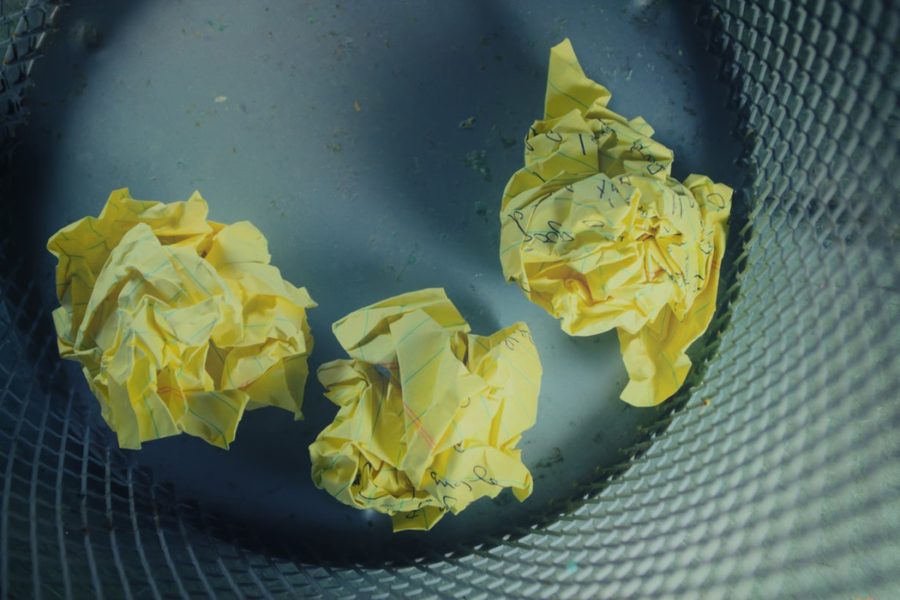
3 years ago I became an assistant principal at my school. While I am still a teacher of one class each cycle, my main focus is on leading the math team and the support staff and also overseeing the programming and scheduling for the school. It sucks writing about admin stuff for a lot of the reasons that makes blogging challenging for anyone. Last year I tried to do more blogging about admin stuff but ended up hiding most of those posts somewhere else because they didn’t feel right. There are 3 specific things that has made it hard for me to blog about my admin work like I blogged about my teaching.
Relationships are hard to write about safely
Relationships are key to any kind of school effort, but writing about staff relationships is rarely appropriate. As we talk about school change, the conversation quickly talks about what people think about the change, or what people think about other people, or what people me. If any of those relationships are keeping you up at night, how do you get the ideas out on your blog that all your co-workers know about? When I wrote about students I used pseudonyms and changed details Those tricks don’t seem to apply as it’s too easy to figure out. Even if I try to mask the name, one would have to guess which of the 8 teachers I’m talking about, as opposed to which of the 90 students I taught that day. A potential staff slip up is more dangerous than with my students. My relationship with those 8 people will go on a lot longer than the kids who I probably won’t see after this year. Longer relationships are longer, and full of complex, tangled details. It’s hard to fully describe the full picture of a co-worker relationship while trying to tell a story of why today was a success, or why the meeting went terribly wrong. I could ask the co-worker if they mind that I write about them, but that isn’t really fair. As their administrator, they would probably feel like they have to go along with what I’m saying, and potentially harbor discomfort.
Vagueness of leadership writing
Writing about education leadership is pathologically vague. Tweets I’ve seen from administrators always sound kind of feel like word salad of educational jargon. A lot of these school leader tweets have this feel (which I am in no way meaning trying to hate on, btw.) I’m guessing she is trying to both describe a pattern she has noticed over interactions with a bunch of teachers and abstracting in order to get something across in tweet form. She can’t go too into detail about where this arose from or how it plays it out in her school, because teaching probably looks totally different at her school. Administrators work with systems and structures that are as unique as their fingerprints, and there just isn’t the time to explain all the necessary relevant items when you have something to get across. Instead the ideas have to extracted from the actual situation that happened, and written as an abstract life lesson that people can maybe apply to their life. I’ve noticed this in leadership books and a lot of other things. Stuff is pretty vague.
I’ve noticed it in own writing too. Last year I had to have a mediation with a couple of staff members and afterwards I wanted to write about it. If it was a conflict between students I could approach a blog post like this: it like “XXXXX and YYYYY had a conflict around ZZZZZZ. We used this protocol, it went pretty well!” I would be able to provide details about who X and Y are, and I can also point to where the task is online that they were working on. As an administrator working with adults, I can’t give too many details about X and Y without divulging their identities, and probably breaking their trust and ruining the relationships we talked about a couple paragraphs ago. Furthermore, Z is a task that really only makes sense at my school, which would require a whole separate blog post to explain, and my actually get us in trouble if fully detailed. So instead I wrote this post on my other admin blog. I instead use a metaphor about icebergs, I posted this a good week or two after the event so people can’t guess who I’m talking about, and it isn’t even clear what I did or why a protocol would be helpful in doing that. It’s super vague. Why go through the trouble of thinking out a reflection to wind up with something that feels as substantitve as soggy shredded wheat?
The Minutiae Trap
Given all of this, it’s easy to want to reflect on a lot of the stuff you can write about. Spreadsheets, compliance, budget allocations. These things are nice and sanitized, self-explanatory, and because they are so concrete they are easy to write about. They are also boring and dangerous. So Megan Roberts did a really good job of illustrating the dangers in a story I’m not sure I have permission to get into details with…but I can vaguely describe it. She was an assistant principal, and she was focused on a lot of these technical aspects. Programming, compliance, getting things done. Her colleague was more interested in building relationships, setting the tone and other “touchy-feely stuff”. Megan felt like she was doing more of the leadership work on her admin team. Then 9/11 happened. In the face of that crisis the school didn’t a leader to check boxes. It needed someone who could connect with everyone personally and let them know everything is going to be ok. It was clear to Megan that leaderships is more than just checking boxes, doing the spreadsheets and other things. The trap you can fall into with admin stuff is thinking that the things that are detached from everyone, and that fit into nice clear boxes which people can understand are the things that are important. This minutiae is not the leadership that the school needs when an emergency comes, but that kind of stuff involves the messy human relationships and the weird institutional quirks at your school that are hard to write about with any clarity.
So what am I trying to do?
I guess I’m trying to figure out how to not be the minutiae guy and have real relationships with people, people who I can’t blog about without being vague. Umm… Oh and there’s all that minutiae stuff that I do want to write about, just without falling into to the trap of thinking that’s all there is to this job. Any ideas on how to do this? Any bloggers out there doing it? Let me know in the comments.
#MTBoSBlogaust? Let’s DO this!
Why? A bunch of reasons, but we can start with 3. Be more vulneraable, be more honest, and be less perfect.
#1 Get in the arena. The “arena” metaphor comes from Theodore Roosevelt’s Man In The Arena speech, which I recently read in Brene Brown’s Daring Greatly. My take away from that book is that people who want to do great things, and who want to be leaders, must to make themselves vulnerable. After my 3rd year of being an administrator I began to feel like I am becoming a leader in name only, so I need to get used to being more vulnerable. In so doing, I will also be helping to build a culture of vulnerability which was highlighted in another book The Culture Code, by Daniel Coyne. What that means is putting ideas out there that are not fully formed, that need to get figured out, and maybe a little risky. I’ll seek out feedback, and not hide from it. I’ll make mistakes and move past it. None of these benefits will happen if I avoid vulnerability and stay on Reddit or youtube or whatever
#2 Get this blog in order. I’m not just talking about brushing off my wordpress skills and adding a new theme or some other fanciness. After giving a talk at TMC urging people to #PushSend, I tried to make a concerted effort to blog more, and ended up blogging less. Why? Aside from having a new baby to feed, bathe, and play with, there was some confusion. See, I have a job of being an assistant principal, but this is a blog about teaching and learning. I only teach 3 or maybe 2 or maybe 0 days a week, and I don’t have nearly as much time to do exciting stuff in the math world. Or maybe I might, but those ideas aren’t as polished as my previous ideas tested against a full teaching load, more on that later. The other question is where do I write about my assistant principal stuff? All these things that I am actively working on in the AP world end up with no real home because I don’t think they should fit on this blog. Or at least that was the case in the past. For this month I’ll try to be honest about what I’m trying to do to grow proessionally. That means I’ll put everything on here, including my spreadsheets and my staff meeting plans, and then decide later if I want to keep doing this or make some kind of admin blog.
#3 Stop with all the perfectionism. #PushSend was very a pep talk for fringe members of the #MTBoS, but really, it was to be a kick in my own butt. I get freaked out whenever I have to click the big blue button, even though I know the benefits as well as anyone. The problem is that a reasoned, data-supported argument about pushing the button does little to sway the part of the brain in charge of the second guessing and the avoidance. The amygdala, a brain structure that represents the evolutionary state of maybe a lizard or a chicken, can takeover when things are scary and shutting off the process of higher functioning parts of the brain. This always leads me to double and triple check my posts before I send them out, or to doubt and re-write things, only to leave the post in ‘Drafts’. My amygdala is confusing the the blue button with an oncoming predator, and triggering me with the fight, flight, or freeze response. By pre-committing to post every day, I will hopefully interrupt that response, as now the stress comes from NOT posting. I am also going to shut down the idea that everything I write will be perfect, because I know nothing will get posted that way.

